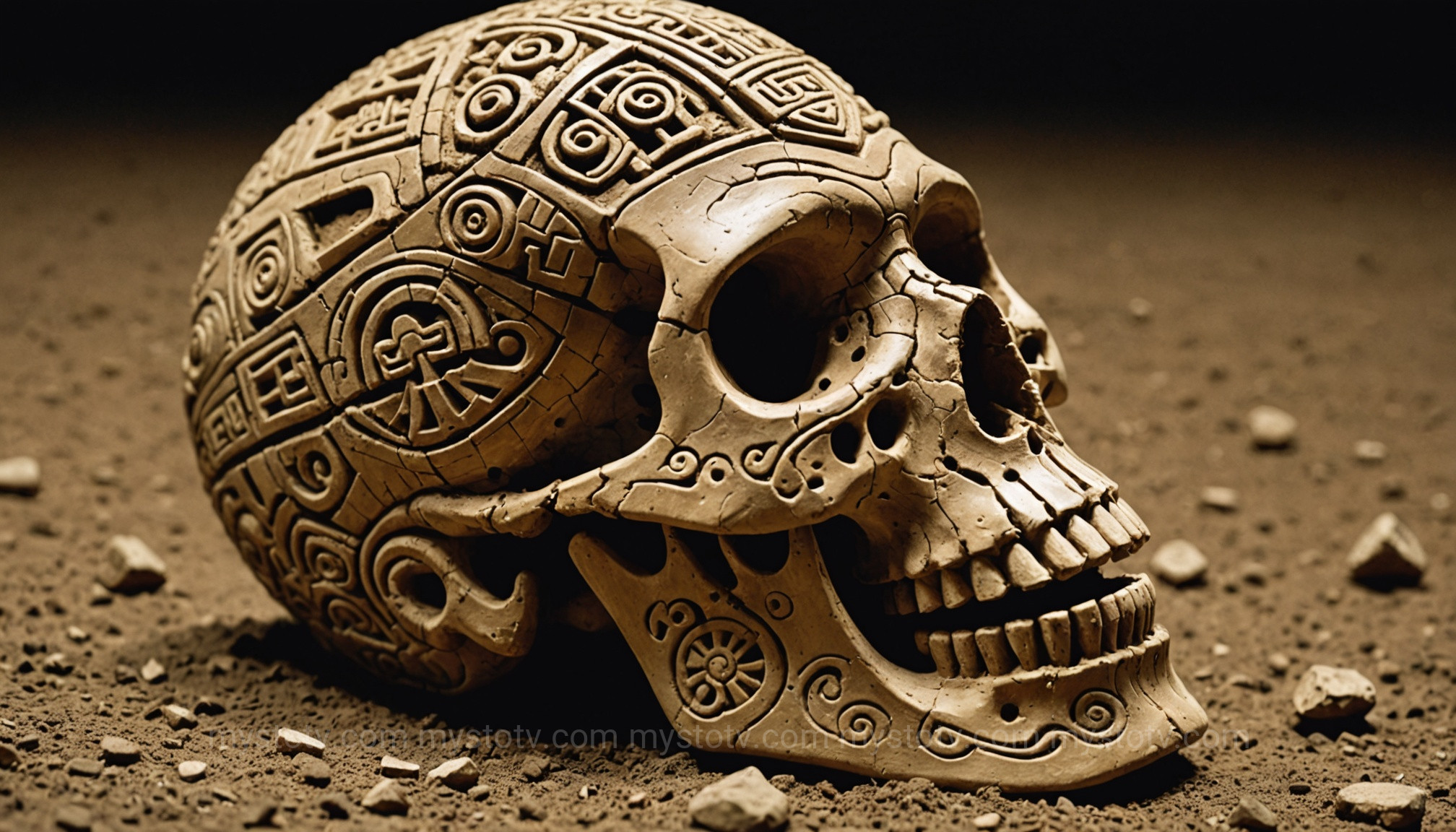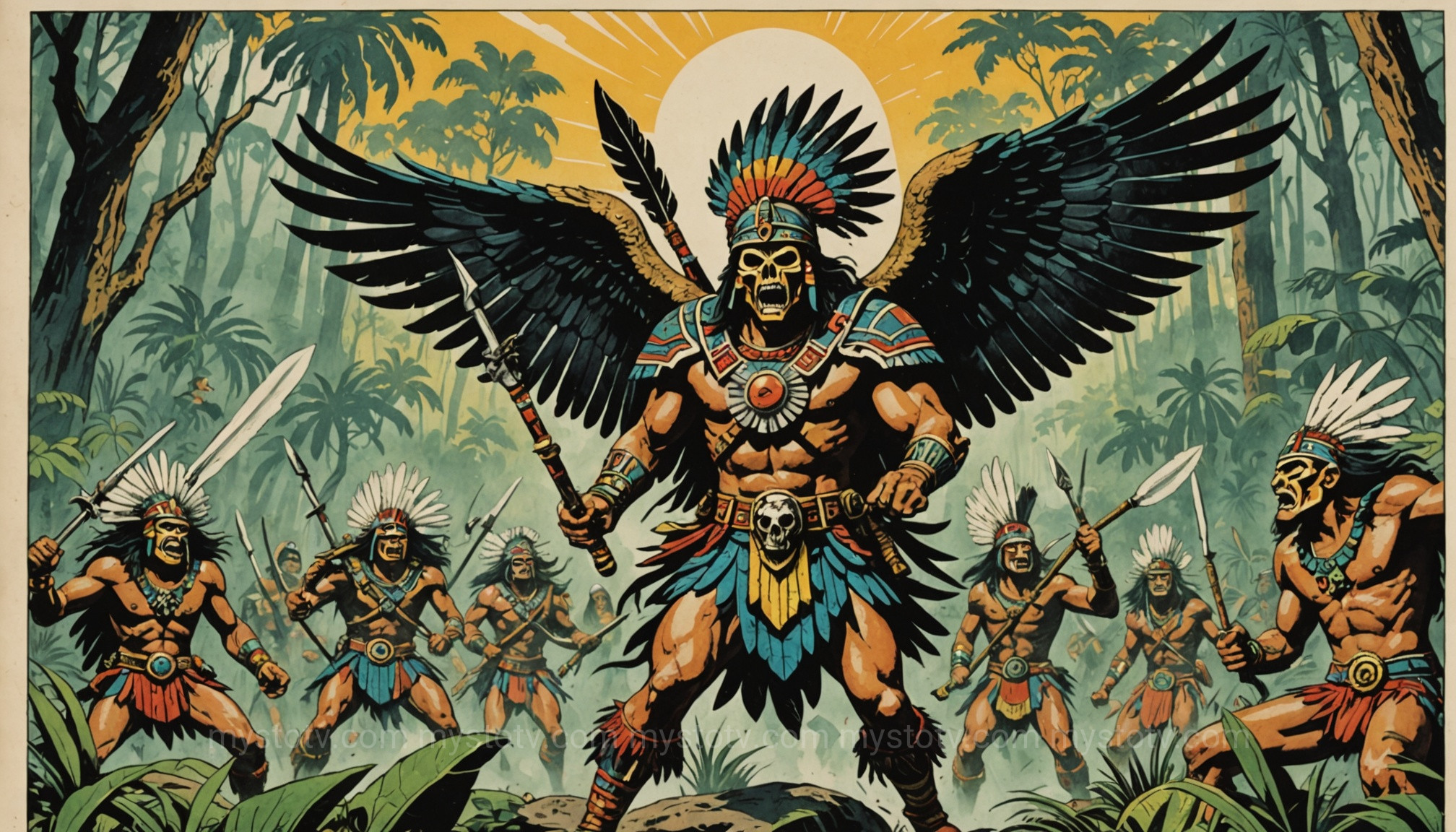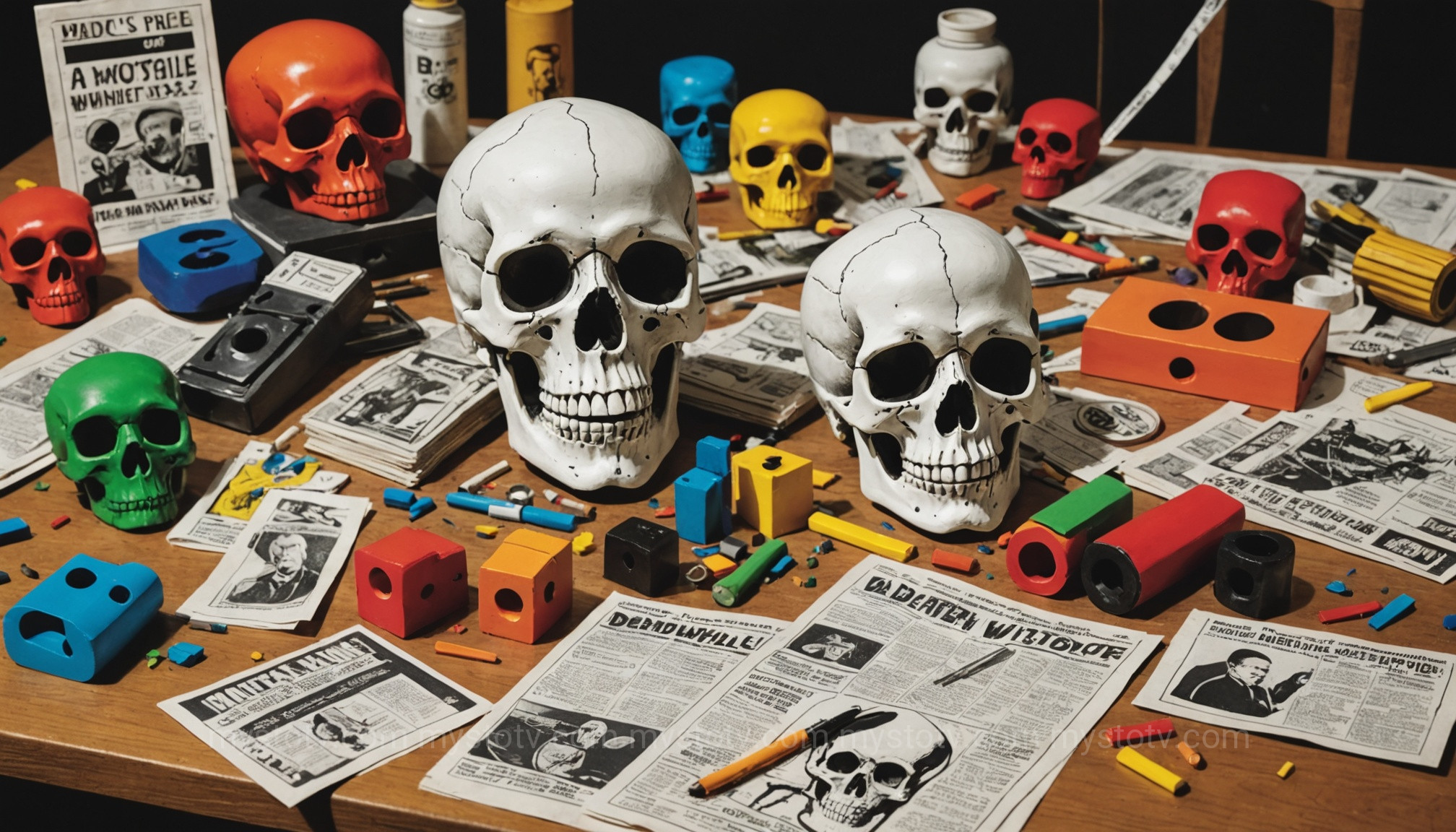The first time I heard it, I wasn't watching a horror movie. I was scrolling through a forum about historical oddities, and someone had posted a link with a simple warning: "turn your volume down." Curiosity piqued, I clicked. The sound that erupted from my speakers was genuinely unsettling—not a musical note, but a raw, agonizing shriek that sounded unnervingly human. It was a complex mix of a howling wind and a guttural scream, a sound that bypassed the ears and settled directly in the pit of my stomach. That was my introduction to the Aztec death whistle. This ancient instrument is more than just a noisemaker; it’s a chilling artifact that offers a window into the soundscape of Mesoamerican rituals and warfare, a topic that continues to fascinate and horrify historians and enthusiasts alike.
Contents
The Chilling Sound and Origins of the Aztec Death Whistle
The sound of the death whistle is its most defining and terrifying characteristic. It doesn't produce a melody but rather a cacophony of noise that mimics a human scream in its most primal state of terror or agony. This unsettling sound has led to intense speculation about its purpose for centuries. But to understand its function, we must first explore what this instrument is and where it came from. Its story begins not in an ancient text, but buried in the earth beneath modern-day Mexico City, waiting to be rediscovered.
What Exactly Is a Death Whistle?

At its core, a death whistle is a type of resonator, an aerophone crafted typically from clay. Many surviving examples and modern replicas are shaped like skulls, but they have also been found in other forms, such as the heads of animals or gods. The design, however, is not merely aesthetic. The internal structure is the key to its horrifying sound. Unlike a simple flute or whistle that creates a clear, pitched tone, the death whistle incorporates a more complex system. It often involves two chambers that force air across different edges and through a constricted space, creating a chaotic, multi-tonal, and noisy output. This design principle is what allows it to replicate the complex frequencies found in a human scream.
Unearthing the First Death Whistle: The Discovery Story
For a long time, these artifacts were miscategorized. The most famous discovery occurred in 1999 during an excavation at a temple of the wind god, Ehecatl, within the Templo Mayor complex in Mexico City. Archaeologists unearthed the skeleton of a sacrificed individual, and clutched in the skeleton's bony fingers was a small, skull-shaped object. For over a decade, it was labeled as a toy or a simple ornament and stored away in a warehouse. It wasn't until around 2012 that a researcher, curious about the object, decided to blow into it. The blood-curdling scream that it produced shocked everyone. This moment transformed our understanding of the artifact, recasting it from a simple trinket into a potent ritualistic instrument—an authentic Aztec death whistle. This specific whistle is often called the "Ehecatl-Mictlantecuhtli" whistle, linking the god of wind (Ehecatl) with the god of death and the underworld (Mictlantecuhtli).
The Science Behind the Scream: How It Works
The acoustic engineering of the death whistle is surprisingly sophisticated. The sound is generated when air is blown into the instrument, splitting into two or more streams. These streams create turbulence and conflicting frequencies within a spherical chamber. The shape of this chamber and the placement of the exit hole are precisely calibrated to produce a sound that falls within the 1,000 to 4,000 Hz range, which is where the human ear is most sensitive and where the most disturbing elements of a scream are concentrated. Some analyses suggest the sound also contains non-linear acoustic effects, which create a rough, chaotic quality that our brains interpret as distress. It’s a masterful piece of psychoacoustic design, engineered to evoke a primal fear response.
The Purpose and Theories Behind the Death Whistle

The rediscovery of the death whistle's true nature opened a floodgate of theories about its use in Aztec society. While its exact purpose is still debated among archaeologists and historians, the evidence points to several compelling possibilities. These theories are not mutually exclusive; it's likely the instrument served multiple functions depending on the context.
A Tool of Psychological Warfare?
One of the most popular and visceral theories is that the death whistle was a tool of war. Imagine hundreds of Aztec warriors charging into battle, the cacophony of their drums and shouts punctuated by the piercing shrieks of countless death whistles. The sound, designed to mimic the screams of the dying, would have been a terrifying weapon of psychological warfare. It could demoralize enemy forces, create chaos and fear, and signal the charge. However, some historians urge caution with this theory. While effective, there is limited archaeological evidence of mass-produced whistles, which one might expect for a standard-issue military instrument. Most have been found in specific ritualistic or burial contexts, suggesting a more specialized use.
A Ritual Instrument for Sacrificial Ceremonies?
The context of the original 1999 discovery provides strong support for a ritualistic purpose. Found in the hand of a sacrificed victim at the temple of a god, the death whistle was likely used in ceremonies related to death and the afterlife. It may have been used to guide the soul of the sacrificed person to the underworld, Mictlan. The whistle's scream could have served as a conduit, a sonic bridge between the world of the living and the realm of the dead, perhaps intended to appease Mictlantecuhtli, the lord of the underworld. The sound might also have been part of the sacrificial ritual itself, used to simulate the victim's final cry or to heighten the spiritual and emotional intensity of the event for all participants.
Healing and Spiritual Journeys?
A less common but intriguing theory posits that the death whistle was not just for war or death rituals but also for healing or shamanic practices. Some ethnomusicologists suggest that certain sounds can induce altered states of consciousness. A shaman might have used the whistle's intense frequency to guide a patient through a difficult spiritual or healing journey, perhaps to confront their own "demons" or to simulate a near-death experience for a spiritual rebirth. In this interpretation, the "scream" is not one of terror but of catharsis and transformation. This highlights the deep spiritual complexity that could be embedded in such a seemingly terrifying object.
The Modern Revival of the Ancient Death Whistle
In the digital age, the Aztec death whistle has experienced a dramatic revival. What was once a niche archaeological curiosity is now a viral sensation, captivating a global audience through videos, music, and modern craftsmanship. This newfound fame has secured its place in modern culture, far from the temples of Tenochtitlan.
From Archaeological Find to Modern Curiosity
The internet, particularly platforms like YouTube and TikTok, has been instrumental in the death whistle's resurgence. Videos demonstrating its terrifying sound have garnered millions of views, shocking and fascinating a new generation. This viral exposure has transformed it from an academic subject into a tangible, and desirable, piece of history. Enthusiasts, musicians, and history buffs are now more aware than ever of this unique instrument, leading to a surge in interest and discussion about its origins and purpose. The sound is so unique that hearing it once makes it unforgettable, a perfect recipe for online virality.
The Role of the Death Whistle in Film and Music
The bone-chilling shriek of the death whistle is a sound designer's dream. Its organic, terrifying quality has made it, or sounds inspired by it, a staple in horror and action film soundtracks. It provides an instant sense of primal dread that synthetic sound effects often struggle to replicate. Composers and musicians are also incorporating the death whistle into their work, using its raw power to create unique soundscapes that are both ancient and modern. It serves as a potent reminder of how sound can be used to evoke powerful, instinctual emotions.
Acquiring Your Own Death Whistle: Replicas and Artisans

Thanks to its popularity, acquiring a functional death whistle is now easier than ever. Artisans around the world, many based in Mexico, create high-quality replicas using traditional methods and materials like clay. These handmade whistles offer the most authentic experience. Simultaneously, modern technology has introduced another option: 3D-printed death whistles. These can be incredibly precise, allowing for consistent replication of the internal acoustics. When purchasing a replica, it's important to look for makers who understand the acoustic principles. A true death whistle is not just a skull-shaped whistle; it must have the correct internal chamber design to produce the signature scream. Reading reviews and watching video demonstrations can help ensure you're getting an instrument that honors the terrifying legacy of the original.
FAQ About the Death Whistle
The mystery and unique nature of the death whistle lead to many questions. Here are answers to a few common ones.
Is the death whistle dangerous to blow?
For the user, a death whistle is not inherently dangerous to blow. However, it is extremely loud. Blowing it at full force, especially indoors or near someone's ears, can potentially damage hearing. It is best used outdoors and with caution. Think of it like a very loud emergency whistle or air horn; use it responsibly.
Are all skull-shaped whistles a death whistle?
No. This is a common misconception. The "death whistle" name refers to the specific sound it produces, which comes from its unique internal acoustic design. Many simple ocarinas or whistles are made in the shape of a skull for aesthetic reasons but produce a simple, melodic tone. A true death whistle is defined by its horrifying, scream-like sound, not its shape, although the skull remains the most iconic design.
How loud is a real death whistle?
The volume can vary significantly based on the size, material, and craftsmanship of the whistle, as well as the force of the person blowing it. Many replicas can easily reach over 100-120 decibels, which is comparable to a chainsaw or a rock concert. The original artifacts were likely just as loud, making them highly effective for their intended purpose, whether in a crowded ritual or across a battlefield.
References
- Arnd Adje Both, "Aztec Music Culture," The World of Music, vol. 49, no. 2, 2007, pp. 91–104. JSTOR,
- Associated Press. "Aztec 'death whistle' may have been used to help sacrificial victims on their journey to the underworld." New York Daily News, 12 Dec. 2012.
- Mexicolore. "The ‘death whistle’." Mexicolore.co.uk, an educational resource on the Aztecs/Mexica. https://www.mexicolore.co.uk/aztecs/music/the-death-whistle
Conclusion: The Enduring Echo of the Death Whistle
The death whistle is far more than a historical curiosity; it is a profound acoustic artifact that echoes with the beliefs, fears, and rituals of an ancient civilization. From its rediscovery in the hands of a sacrificed victim to its viral revival on the internet, it continues to evoke a powerful, primal response in all who hear it. Whether it was a weapon of war, a guide for the dead, or a shaman's tool, its scream cuts through the centuries, reminding us of the ingenuity of the Aztec people and the enduring power of sound to shape human emotion. The death whistle remains a chilling, mysterious, and unforgettable piece of our shared world history.